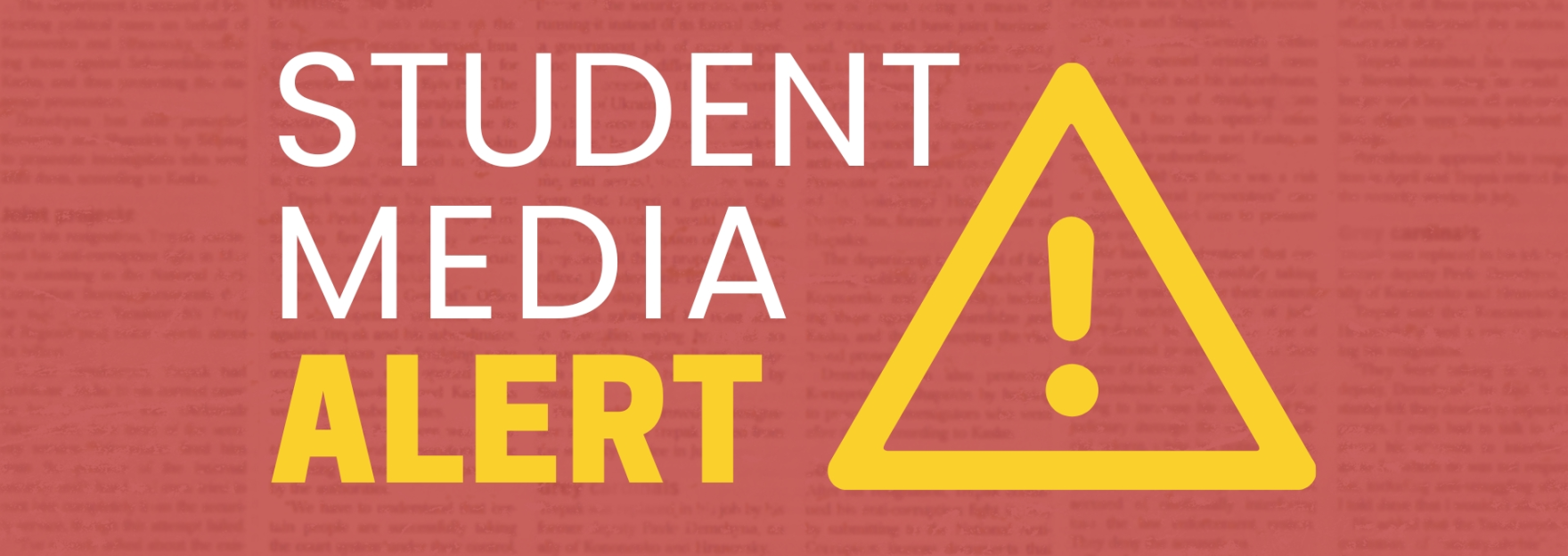
By Candace Bowen, MJE
When a late-night talk show host who has been on air for two decades gets the boot (although temporarily) for content that could hardly be considered illegal, we begin to worry about our rights and our students’ rights.
And probably we should. The Student Press Law Center recently reported to a group of donors that they have received hotline calls about administrator challenges “far above what’s usual at the high school level.”
The SPLC with JEA, NSPA, Quill & Scroll plus college organizations ACP and CMA issued a Student Media Alert April 4, 2025, warning about the increased detentions and deportations by Immigration and Customs Enforcement (ICE) and the “severe consequences” to non-citizen student speakers, even when what they say is legally protected speech.
“At this moment, it is essential to hear from those most impacted by current U.S. policies,” the alert states. “It is our duty as journalists to seek them out. Find the balance required to tell the most accurate story you can while minimizing harm.”
But that’s the big challenge. The very people who are feeling the impact most and whose stories we should know are those who have the most to lose. So how do we “minimize harm” if we want to write about them?
The Society of Professional Journalists’ Code of Ethics lists and explains four principles that are the basis for ethical journalism: Seek Truth and Report It, Minimize Harm, Act Independently, and Be Accountable and Transparent.
Two of the seven points under “minimize harm” are particularly applicable:
- Show compassion for those who may be affected by news coverage. Use heightened sensitivity when dealing with juveniles, victims of sex crimes, and sources or subjects who are inexperienced or unable to give consent. Consider cultural differences in approach and treatment.
- Consider the long-term implications of the extended reach and permanence of publication. Provide updated and more complete information as appropriate.
The JEAHELP listserv recently had at least four posts about student reporters having a hard time getting students AND faculty to go “on the record” for articles. These were from places as varied as Illinois, Texas, Ohio and California. It’s a challenge to our student journalists – and to advisers — but it’s one we all need to understand. We need to be comfortable with the balance between telling stories that need to be heard and protecting the speakers who might be harmed by telling them.
The warning from the SPLC, JEA and other student media organizations included four basic steps:
- Review Your Takedown/Anonymity Policies. While in the past, these organizations suggested restraint in taking down anything that wasn’t factually incorrect, today’s climate suggests erring on the side of caution for the sake of the source.
- Be Transparent with Your Sources and Audiences About Anonymous Bylines and Sourcing. Don’t promise to conceal a source’s name if you can’t keep that promise, and, in today’s situations, you often can’t.
- Educate Staffs on Risks. Make sure your whole staff understands this — not just the adviser and not just the editors. Review the SPLC’s special legal guide on immigration topics.
Additional Resources
- Responding to takedown demands(SPLC)
- Protecting Sources & Information(SPLC)
- Reporters Privilege Compendium(RCFP)
- An illustrated Poynter guide to using unnamed sources in your reporting(Poynter Institute)
- Unnamed Sources(JEA)Legal FAQs on “Ice Raids” for Student Journalists (SPLC)
- Source protection(Freedom of the Press Foundation)
- News organizations’ policies on anonymous sources: Associated Press, NPR
Written By: Candace Bowen, MJE

